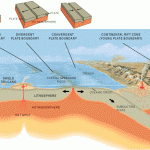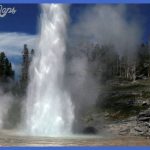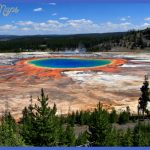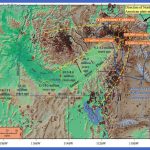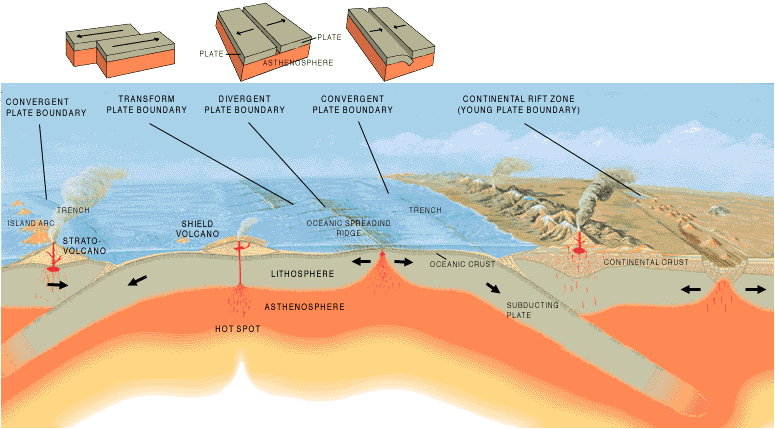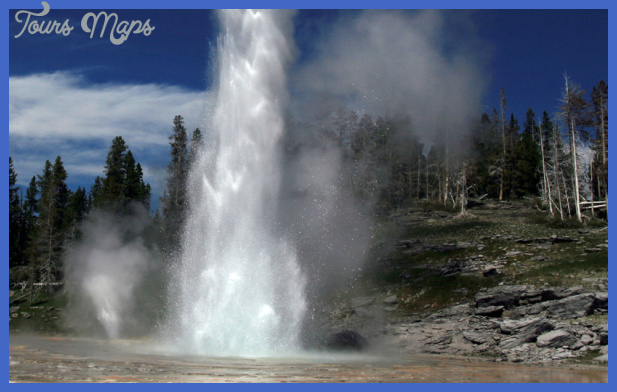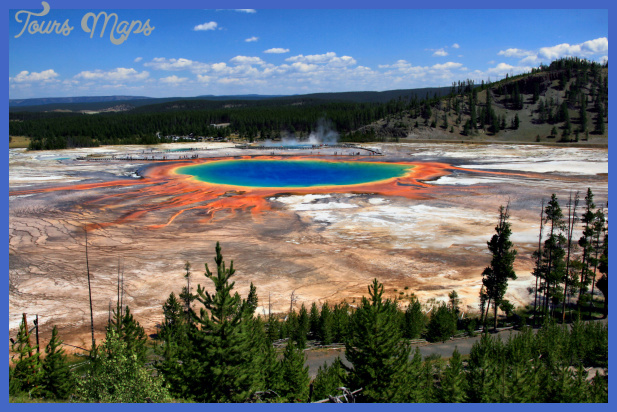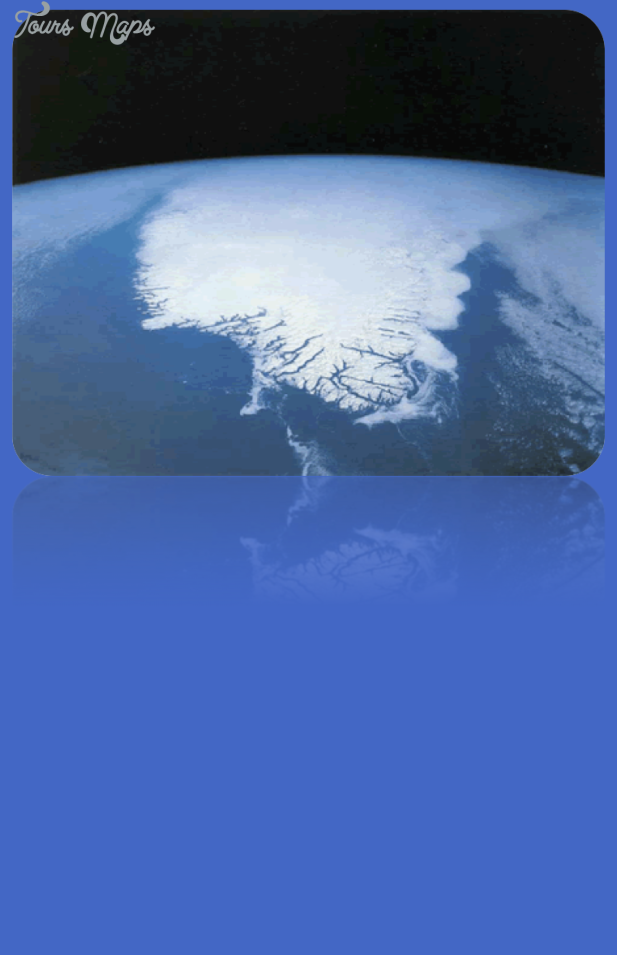Steam vents, or fumaroles, are places where there’s a steady flow of steam coming from a fissure in the ground. A steady downward see of groundwater reaches hot rocks, the water boils, and the steam is vented through the fissure. Over time, the steam breaks down the rocks chemically where it is escaping, turning them into clays. When enough clays have been made, they tend to form a bowl-shaped soupy mass, a mud pot. The steam coming up through the clay will now make mud bubbles, sometimes more than 6 inches (15 cm) across. These are the delightful blurping bubbles that can be seen at several park localities, including Fountain Paint Pot [GE0.20] and Thumb Paint Pots at West Thumb Geyser Basin [GEO.21]. In other places, very hot ground water rises to the surface to make a hot pool. These deceptively inviting pools have lovely colors, but their water is at or near the boiling point. Examples are Grand Prismatic Spring [GEO.22] in Midway Geyser Basin and Emerald Spring [GEO. 23] in Norris Geyser Basin. Most of the rocks underlying the hot water and steam features in the park are rhyolites or related igneous rocks. A major exception to this is the collection of terraced structures that have built up at Mammoth Hot Springs [GEO.24]. Before reaching the surface, hot water rising there encounters limestone rather than rhyolite.
Limestone is sedimentary rock that was deposited in shallow seas and is mostly made up of the shells of marine organisms. The water under the Mammoth area dissolves some of the limestone and brings it up to the surface. Here the water is under less pressure. It can no longer hold all the carbon dioxide in solution, and some of the gas bubbles escape, causing some of the dissolved limestone to deposit out, forming the terraces. Mud pot near Imperial Geyser (Lower Geyser Basin). Notice the two mud bubbles at upper left, one at lower left, and the trace of one that just popped, bottom left. This rock is a white or gray form of limestone called travertine. The hot waters on Mammoth’s terraces contain algae and bacteria that are orange, green, yellow, or brown and coat the travertine with color. This ever-changing palette is dependent upon the quantity and temperature of water at the particular spot. Are we due for another caldera eruption? We saw above that the last caldera eruption was 640,000 years ago, while the preceding two eruptions were at intervals of 700,000 and 700,000 years. Time intervals between such major eruptions are not necessarily regular, but should we worry that a new caldera explosion could occur soon? Rather than leaving the Yellowstone area or weakening, the Yellowstone hot spot appears now to be centered in the northeast portions of the park.
This would be consistent with the path of the hot spot, which has been traced back in time southwestward to north central Nevada about 17 million years ago. Of course, it was the North American plate that moved, carrying north central Nevada away from the hotspot. What evidence is there of the likelihood of a new caldera catastrophe? An increase in magma under Yellowstone would indicate an impending caldera eruption. By studying seismic waves that pass below the park, geophysicists have shown the presence of molten rock in two areas: the Mallard Lake dome [GEO.25] just east of Old Faithful and the Sour Creek dome [GEO.26] east of Hayden Valley. To indicate an impending caldera type of explosion, however, these two magma regions would need to be growing. Neither of these domes is easy to see. Careful studies of the ground level revealed that the ground in the Sour Creek dome area rose a total of 36 inches (91 cm) between 1923 and 1984. Then it subsided somewhat for a decade but recently has been rising again. Nobody knows if the rising is due to new magma flowing into the area at depth or to steam, or a combination of the two. A similar behavior was measured at the Mallard Lake dome.
This type of uplifting area is called a resurgent dome. Geologists were concerned about these measurements, because they implied more magma was forcing the ground up to make room. The process looks suspiciously like what must have happened just before the Yellowstone caldera eruption. What does this heavy breathing by the earth mean about possible eruptions? Geophysicists are working to understand it. There’s clearly no immediate danger but stay tuned.
How do the other hydrothermal features work Yellowstone? Photo Gallery
Maybe You Like Them Too
- The Best Cities To Visit in The World
- World’s 10 Best Places To Visit
- Coolest Countries in the World to Visit
- Travel to Santorini, Greece
- Map of Barbados – Holiday in Barbados

